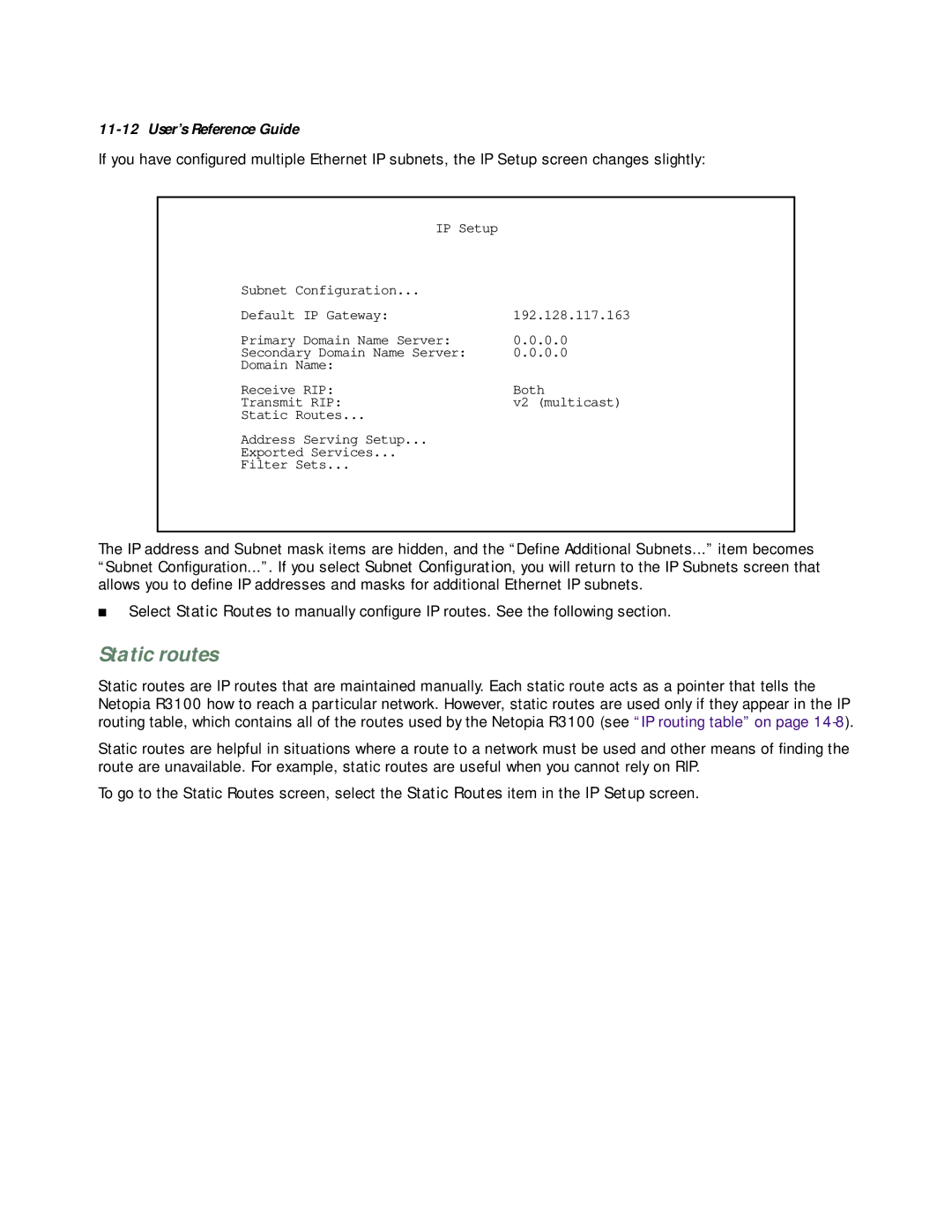
11-12 User’s Reference Guide
If you have configured multiple Ethernet IP subnets, the IP Setup screen changes slightly:
IP Setup |
|
Subnet Configuration... |
|
Default IP Gateway: | 192.128.117.163 |
Primary Domain Name Server: | 0.0.0.0 |
Secondary Domain Name Server: | 0.0.0.0 |
Domain Name: |
|
Receive RIP: | Both |
Transmit RIP: | v2 (multicast) |
Static Routes... |
|
Address Serving Setup...
Exported Services...
Filter Sets...
The IP address and Subnet mask items are hidden, and the “Define Additional Subnets...” item becomes “Subnet Configuration...”. If you select Subnet Configuration, you will return to the IP Subnets screen that allows you to define IP addresses and masks for additional Ethernet IP subnets.
■Select Static Routes to manually configure IP routes. See the following section.
Static routes
Static routes are IP routes that are maintained manually. Each static route acts as a pointer that tells the Netopia R3100 how to reach a particular network. However, static routes are used only if they appear in the IP routing table, which contains all of the routes used by the Netopia R3100 (see “IP routing table” on page
Static routes are helpful in situations where a route to a network must be used and other means of finding the route are unavailable. For example, static routes are useful when you cannot rely on RIP.
To go to the Static Routes screen, select the Static Routes item in the IP Setup screen.
